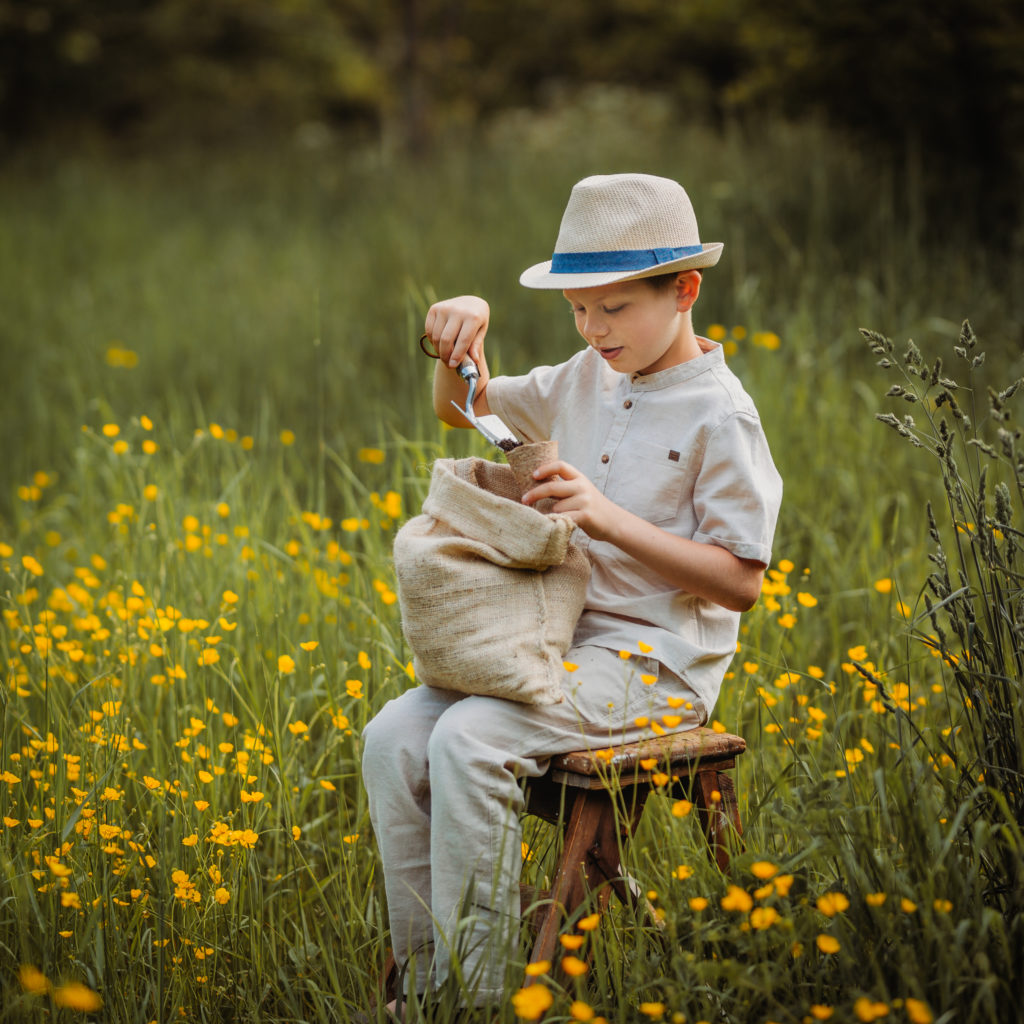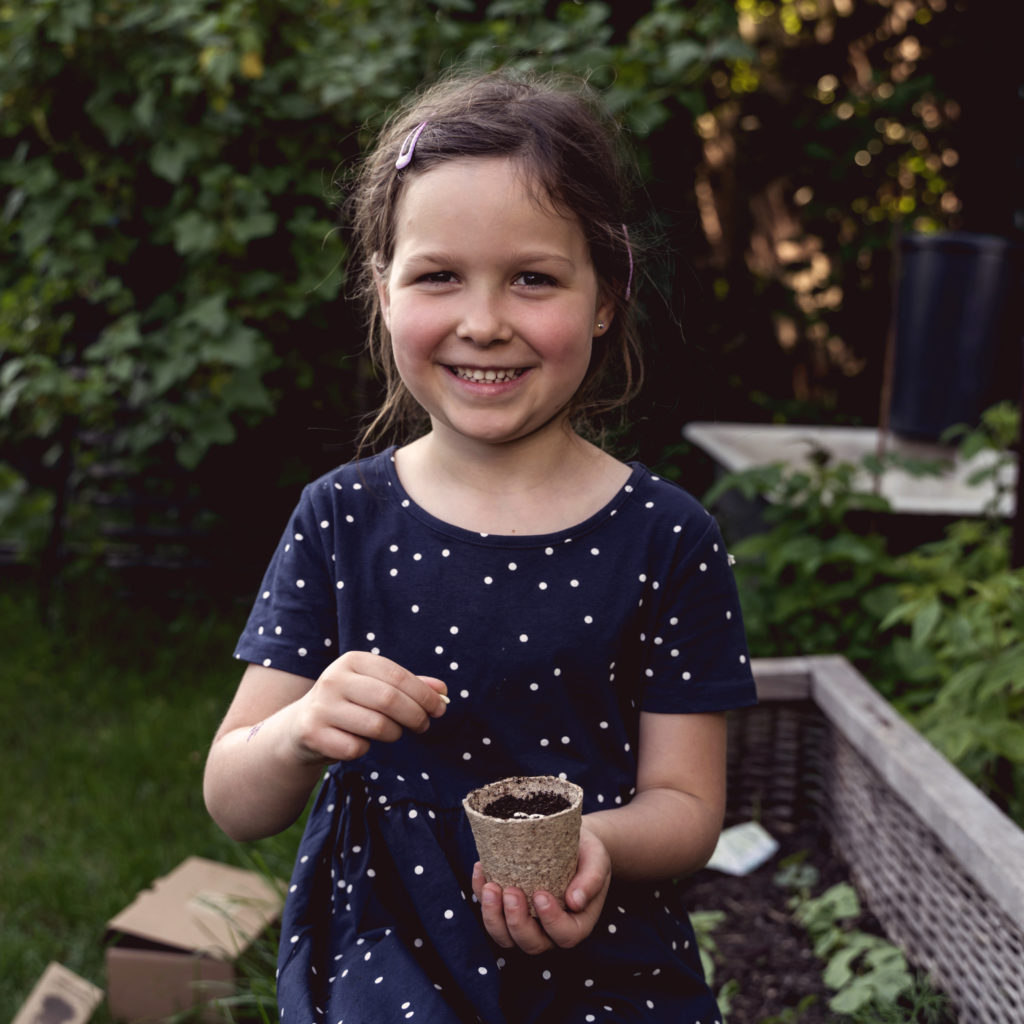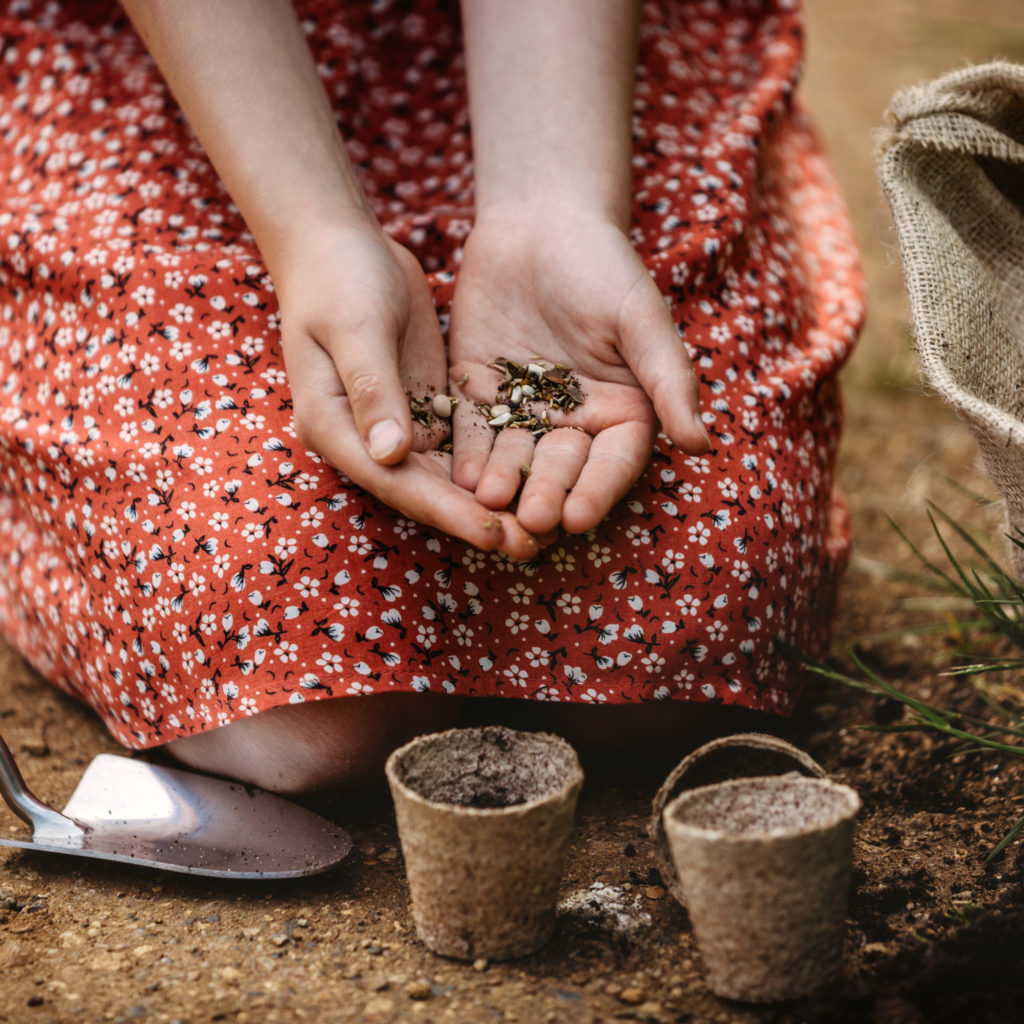Gardening with Kids

How to encourage little hands to plant, water, and grow using the easiest seeds and the best methods.
Children curious, like to learn by doing, and love to play in the dirt. Working in a garden, a child can experience the satisfaction that comes from caring for something over time, while observing the cycle of life firsthand.
Gardening gives children a chance to learn an important life skill, one that is overlooked in standard school curriculums. Gardening is also a great way to teach environmental awareness by exploring the workings of nature.
You don’t even need to have an outdoor space to enjoy gardening with your little one. A great way to introduce your child to gardening and the outdoors is by simply planting a little packet of seeds and growing them in a pot or window box.

To avoid children’s boredom, choose fast growing seeds for kids.
The quicker they can see something happen, the more interested they will be in the process.
Plants with large or small dimensions create a sense of wonder in children.

Tips for gardening with children:
Quick start your gardening
A great way to start is to plant quick-sprouting seeds so that impatient little ones can see the results of their hard work without much waiting around; sunflower, cress and pea seeds provide really easy results.
Stimulate the senses
Planting in the garden is a great way to stimulate your child’s senses of touch, sight, sound, taste and smell – soft flowers, bushes and plants that rustle, strong smells and bright colours all help to enrich your child’s experience of gardening. These kinds of sensory plants can be particularly beneficial for children with special needs and sensory impairments, as it encourages them to explore and enjoy the garden.
Mini tools
If your little one really loves getting out and about in the garden it can be helpful to buy a set of child-friendly mini-tools that they can hold and use by themselves. Having a little watering can, rake, trowel and spade can really help build your child’s sense of independence as well as their physical movement and fine motor skills.
Keep your little one interested
Your toddler may become completely engrossed in gardening with you, however be prepared for the fact that they may have a limited attention span and won’t be absorbed for more than a few minutes at a time. It’s a good idea to keep things simple and have other activities up your sleeve to extend your child’s interest.
- Get your children to make plant labels to mark where and what seeds have been planted
- Go on a hunt for minibeasts (e.g. snails, worms and insects)
- Explain how bugs and creepy-crawlies are good for the soil and plants
- Encourage them to hold these creatures gently and carefully so that they can see what minibeasts look like
- Make a compost heap and explain to your child what you can and can’t put in there
Ask questions
Keep them involved throughout the process and ask lots of questions so that they feel like they’re actively involved. Ask them where they think would be a good spot for their plants and why, how long they think their plants will take to grown and what they might look like.
What next?
Whilst their seeds are growing, keep them interested in the garden by watching a bean begin to sprout. Take a few sheets of a kitchen roll, wet them and roll them inside a pint glass or tall jar. Drop a bean seed down the side and watch as the bean sprouts roots. It’s a great way of showing little ones what’s happening underground.

